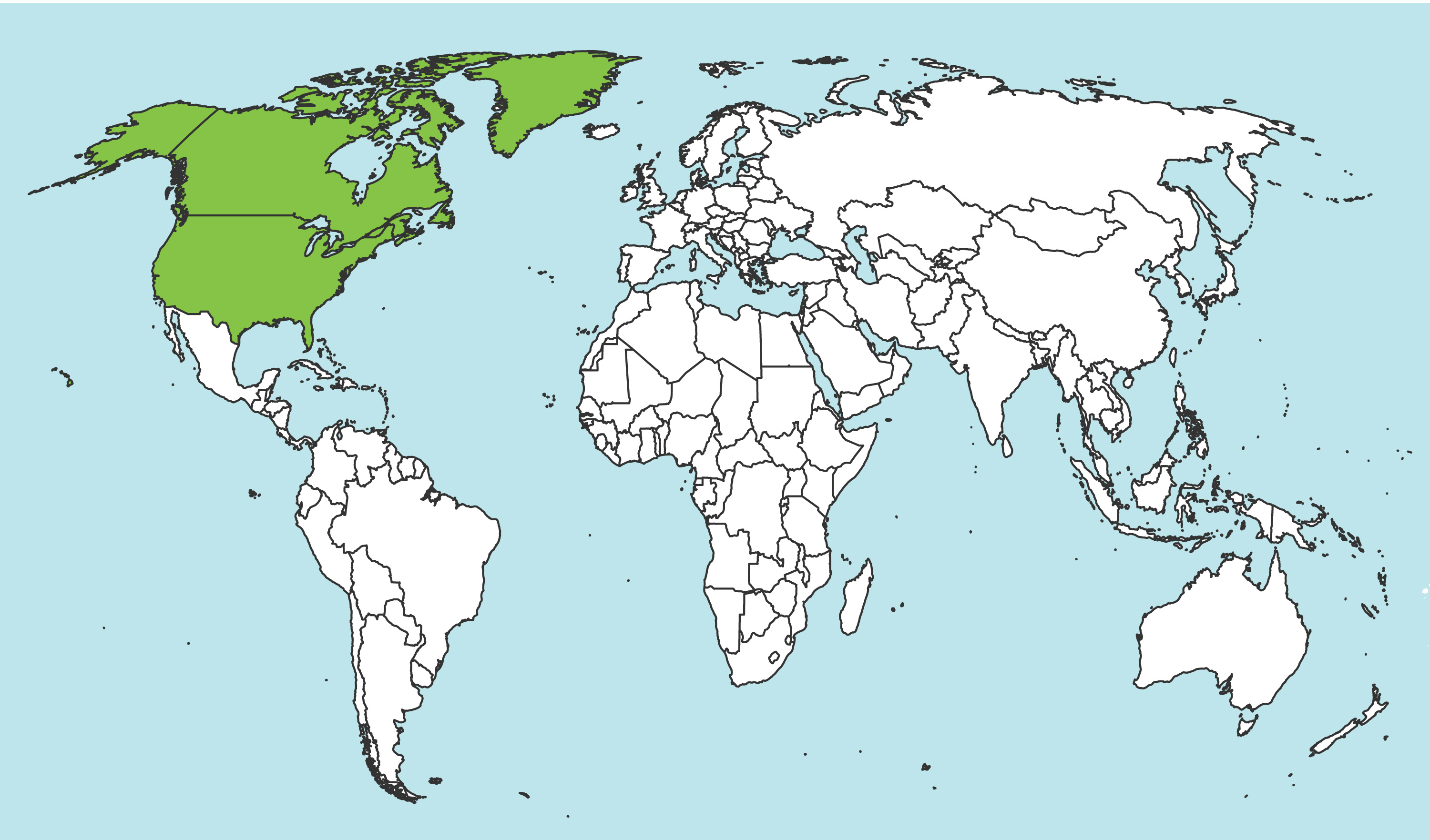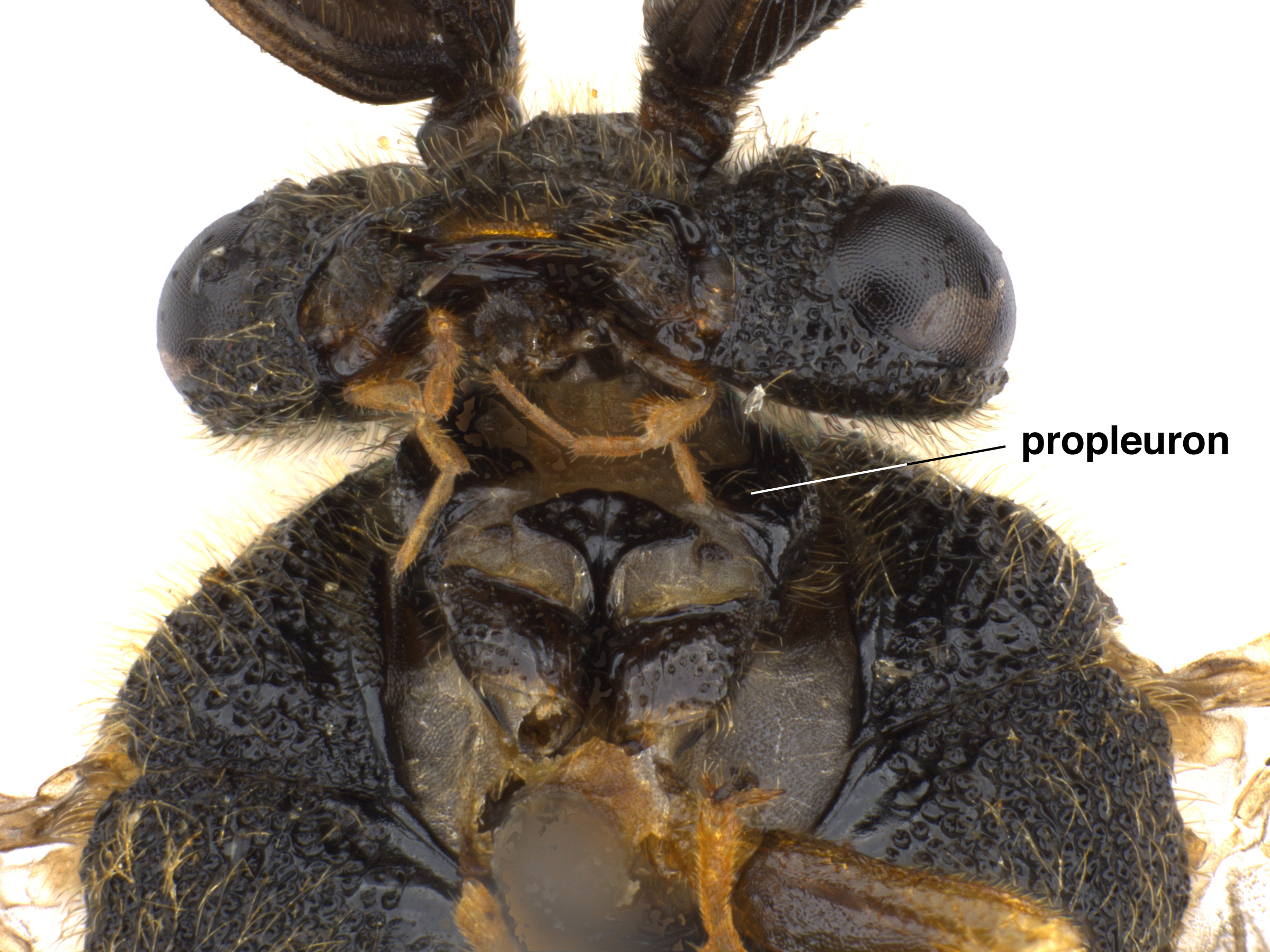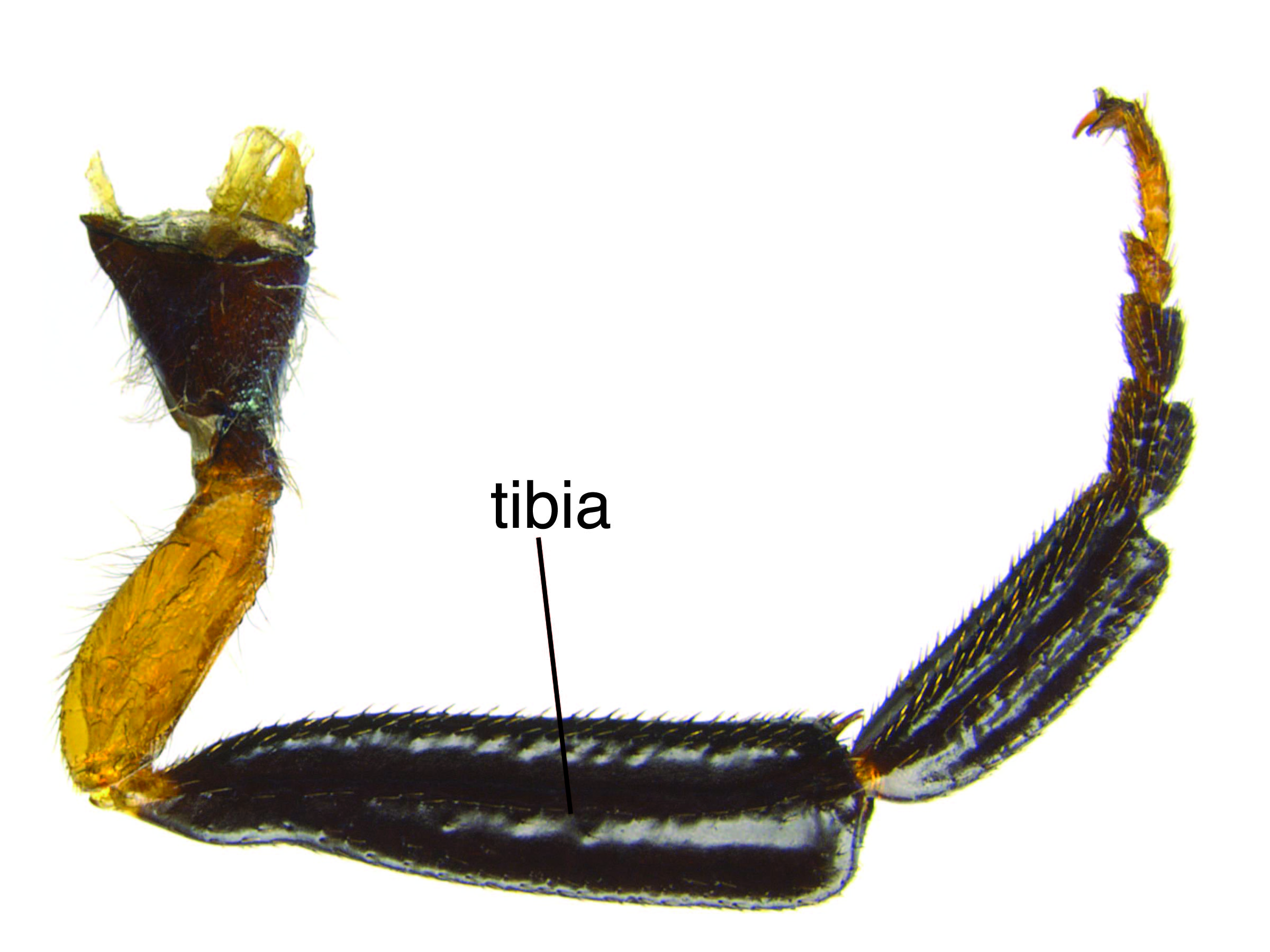Superfamily: Pamphilioidea
Family: Pamphiliidae
Family common name: web-spinning and leaf-rolling sawflies
Subfamilies: Cephalciinae, Pamphiliinae
The family Pamphiliidae are known for larval behaviors like eating gregariously in large webs or rolling up leaves. They have a fairly broad host range and are relatively species-rich in the North American Symphyta. Pamphiliidae are recognized by the large head and thin seta-like antennaeantenna:
the sensory organ emerging from the front of the head, usually between the compound eyes and above the clypeus; includes the flagellum, scape and pedicel
 (Smith and Middlekauff 1987Smith and Middlekauff 1987:
(Smith and Middlekauff 1987Smith and Middlekauff 1987:
Smith DR and Middlekauff WW. 1987. Suborder Symphyta. In: Stehr FW ed. Immature Insects. Kendall/Hunt Publishing Company. Vol. 1: 754 pp.). Many have bright colors or distinctive markings (Taeger et al. 2010Taeger et al. 2010:
Taeger A, Blank SM, and Liston AD. 2010. World Catalog of Symphyta (Hymenoptera). Zootaxa 2580: 1-1064.).
Pamphiliidae includes 13 genera and 297 species worldwide. About 5 genera and 73 species are NearcticNearctic:
describing the region of the Northern Hemisphere that includes North America south through northern Mexico
 in distribution (Taeger et al. 2018Taeger et al. 2018:
in distribution (Taeger et al. 2018Taeger et al. 2018:
Taeger A, Liston AD, Prous M, Groll EK, Gehroldt T, and Blank SM. 2018. ECatSymmdash;Electronic World Catalog of Symphyta (Insecta, Hymenoptera). Program version 5.0 (19 Dec 2018), data version 40 (23 Sep 2018). Senckenberg Deutsches Entomologisches Institut (SDEI), Muuml;ncheberg. https://sdei.de/ecatsym/ Accessed: 28 Jan 2020.).
Acantholyda
Cephalcia
Neurotoma
Onycholyda
Pamphilius
 evenly sloped; not extremely constricted medially (Goulet 1992Goulet 1992:
evenly sloped; not extremely constricted medially (Goulet 1992Goulet 1992: short ventrally (Goulet 1992Goulet 1992:
short ventrally (Goulet 1992Goulet 1992: divided medially (Goulet 1992Goulet 1992:
divided medially (Goulet 1992Goulet 1992: with 3–4 preapicalpreapical:
with 3–4 preapicalpreapical: spurs (Goulet 1992Goulet 1992:
spurs (Goulet 1992Goulet 1992: with 2 apicalapical:
with 2 apicalapical: wide, as wide as distance between the compound eyes (Goulet 1992Goulet 1992:
wide, as wide as distance between the compound eyes (Goulet 1992Goulet 1992: , and somewhat quadratequadrate:
, and somewhat quadratequadrate: , as seen from above (Smith and Middlekauff 1987Smith and Middlekauff 1987:
, as seen from above (Smith and Middlekauff 1987Smith and Middlekauff 1987:In North America, Pamphiliidae feeds on coniferousconiferous:
describing a conifer
trees in the family Pinaceae, and on angiosperm trees in the families Rosaceae, Salicaceae, and Fagaceae (Smith and Middlekauff 1987Smith and Middlekauff 1987:
Smith DR and Middlekauff WW. 1987. Suborder Symphyta. In: Stehr FW ed. Immature Insects. Kendall/Hunt Publishing Company. Vol. 1: 754 pp.).
Pamphiliidae can be distinguished from other families by the thin, thread-like antennaeantenna:
the sensory organ emerging from the front of the head, usually between the compound eyes and above the clypeus; includes the flagellum, scape and pedicel
 and the folded tergites 2–5 (Goulet 1992Goulet 1992:
and the folded tergites 2–5 (Goulet 1992Goulet 1992:
Goulet H. 1992. The genera and subgenera of the sawflies of Canada and Alaska: Hymenoptera. Symphyta. The insects and arachnids of Canada. Part 20. Agriculture Canada Publication.).
Pamphiliidae sawflies oviposit on leaves or needles of the host plant. LarvaeLarva:
the immature stage of holometabolous insects
 feed externally on foliage, but generally have either the habit of creating intricate nests of silk, frassfrass:
feed externally on foliage, but generally have either the habit of creating intricate nests of silk, frassfrass:
solid larval excrement
, and leaf matter, or feeding inside a rolled-up leaf. Some economic pests are included in this family (Smith and Middlekauff 1987Smith and Middlekauff 1987:
Smith DR and Middlekauff WW. 1987. Suborder Symphyta. In: Stehr FW ed. Immature Insects. Kendall/Hunt Publishing Company. Vol. 1: 754 pp.).
World: This family’s range extends through North America, Europe, Asia, and South America (Taeger et al. 2010Taeger et al. 2010:
Taeger A, Blank SM, and Liston AD. 2010. World Catalog of Symphyta (Hymenoptera). Zootaxa 2580: 1-1064., GBIF).
North America: Pamphiliidae occurs throughout the United States and Canada, south into Mexico (Smith and Middlekauff 1987Smith and Middlekauff 1987:
Smith DR and Middlekauff WW. 1987. Suborder Symphyta. In: Stehr FW ed. Immature Insects. Kendall/Hunt Publishing Company. Vol. 1: 754 pp.).